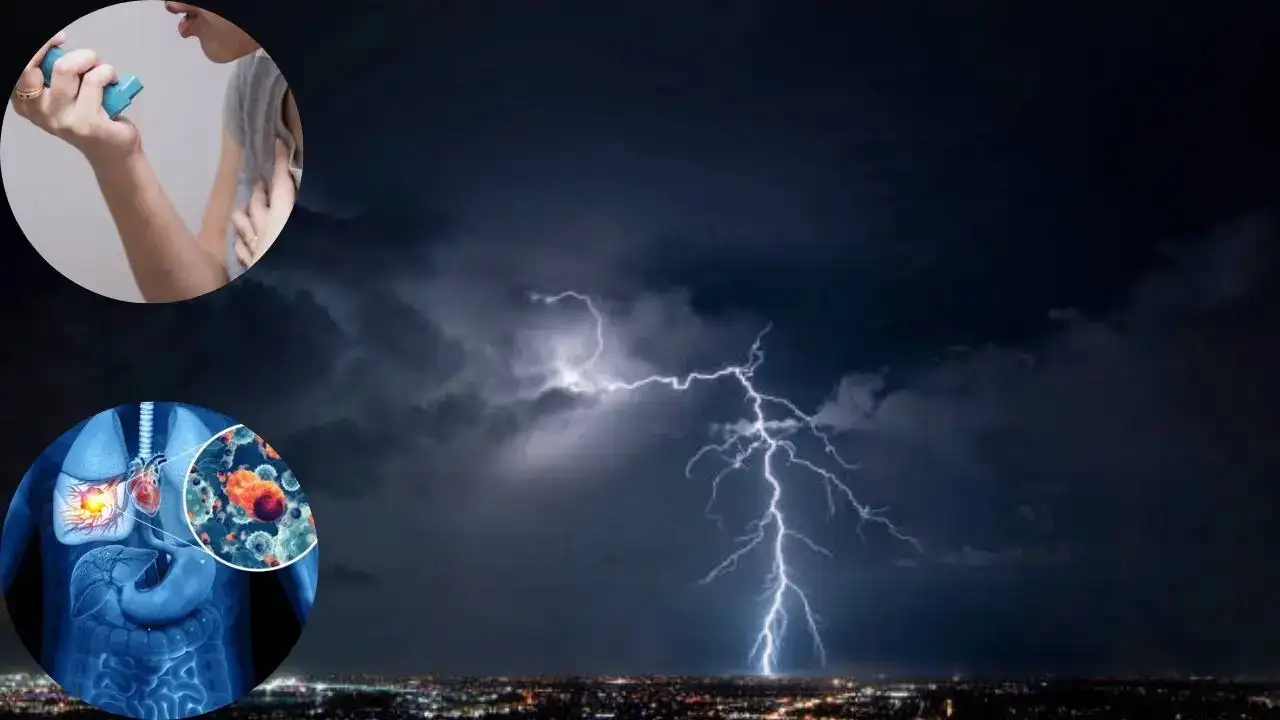
For those battling respiratory issues like asthma, thunderstorms can be really bad news
Sudden rain and thunderstorms hit the national capital region last night, bringing much-needed relief from the scorching summer heat. However, according to experts, for those battling respiratory issues like asthma, thunderstorms can be bad news.
What is thunderstorm asthma?
Thunderstorm asthma refers to the overwhelming surge of sudden asthma attacks immediately after crazy lightning and rains. Also known as epidemic thunderstorm asthma or ETSA, the condition simultaneously affects many people - necessitating acute emergency care and overwhelming the health care services.
Thunderstorm asthma is a worldwide phenomenon, first reported in Birmingham, UK, in 1983, and recurrent severe episodes have occurred across the world. It occurs primarily during the peak pollen season when airborne pollen concentrations are high. “Thunderstorms induce pollen grains to rupture and release their allergenic particles due to factors like humidity, osmotic shock, electric fields, and turbulent airflow,” Dr. Sujatha Ramesh, Consultant-Pediatric Allergy and Immunology, Manipal Hospital, told Times Now.
“Large volumes of these particles are released into the surrounding air during the initial twenty minutes or so of the downpour, potentially exposing people to copious amounts of respirable allergens,” she added.
According to Dr. Ramesh, the particles are small enough to penetrate the lower airways and induce asthma.
Who is at risk?
Experts say pollen-allergic individuals—especially those with nasal allergies—are the most at risk of this condition. Another risk factor is the lower rates of medication use, especially inhaled steroids, among asthma patients.
Other risk factors include a previous diagnosis of asthma and prior hospital admission for the chronic respiratory condition, characterised by inflammation and narrowing of the airways, making breathing difficult.
How is the diagnosis done?
“Diagnosis of TA is made by recognising the symptoms of asthma and allergic rhinitis and associated pollen allergy,” said Dr. Ramesh. A few common symptoms of allergic rhinitis include:
- Persistent runny and stuffy nose
- Sneezing
- Itching
- Cough
- Breathlessness
Even though these are predominantly seasonal, in many people, asthma often goes unrecog And so, it is important to get allergy testing done, which can confirm pollen allergy.
Ways to mitigate and treat thunderstorm asthma
Treatment includes nasal and inhaled corticosteroids. Immunotherapy can also be very effective for treating and preventing pollen allergies. An allergy immunology specialist is perhaps your best guide.
Preventive measures include advising individuals at risk to stay indoors when thunderstorms occur during pollen seasons and to keep windows closed. If one must be outdoors, then wearing protective, small-particle respiratory masks may be useful. Since most patients with respiratory illness visit general practitioners and outpatient clinics, it is essential that these health care providers are aware of thunderstorm asthma and its management.
“Climate change is expected to increase the frequency and severity of TA events due to more intense thunderstorms and higher pollen concentration. A potential interaction between genetics, lifestyle, and environmental factors in industrialised countries has been observed. Something to bear in mind with unprecedented urbanisation and migration of vulnerable populations in India,” said Dr. Ramesh.
Get Latest News Live on Times Now along with Breaking News and Top Headlines from Health and around the world.
